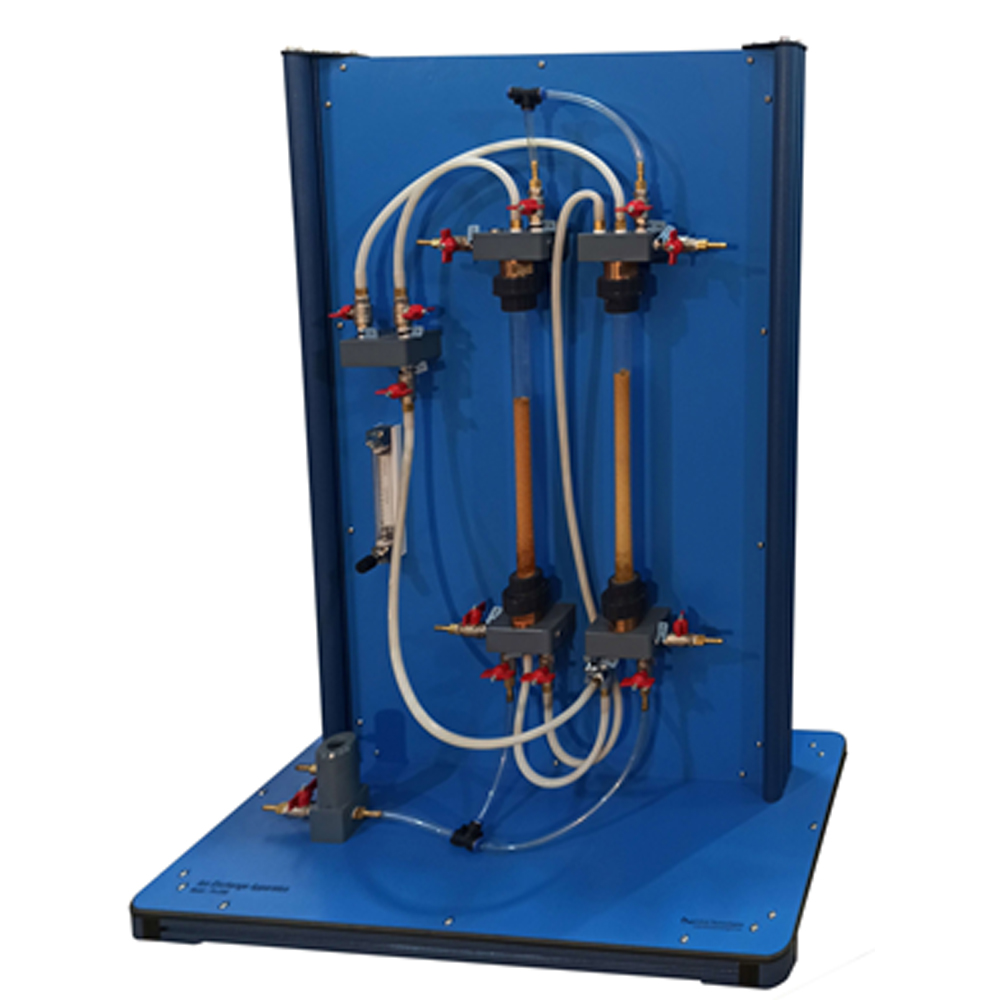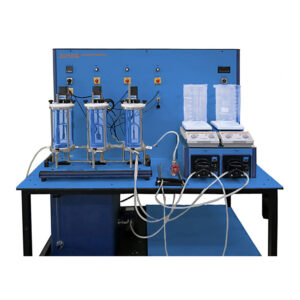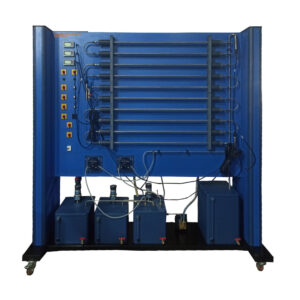Ion exchangers are employed in the desalination and softening processes of water treatment. Cation and anion exchangers used in TH-3268 allow for the demonstration of these processes. The pump is used to transfer raw water from the tank to the cation exchanger’s top. The water flows back into the collecting tank after going through the softening process there.
The raw water is then further sent via the anion exchanger for desalination. The cleaned water then enters the collection tank. Using the same pump, acid or caustic is injected into the ion exchangers during regeneration. The collecting tank is where the used caustic and acid are collected. Before it enters the first ion exchanger, a flow meter can be used to measure the pump’s variable flow rate. A conductivity sensor is positioned upstream of the inflow into the collecting tank for continuous process monitoring. A conductivity meter can be used to read the measured values. All pertinent points can be used to collect samples. Raw water made from the faucet can be used.




